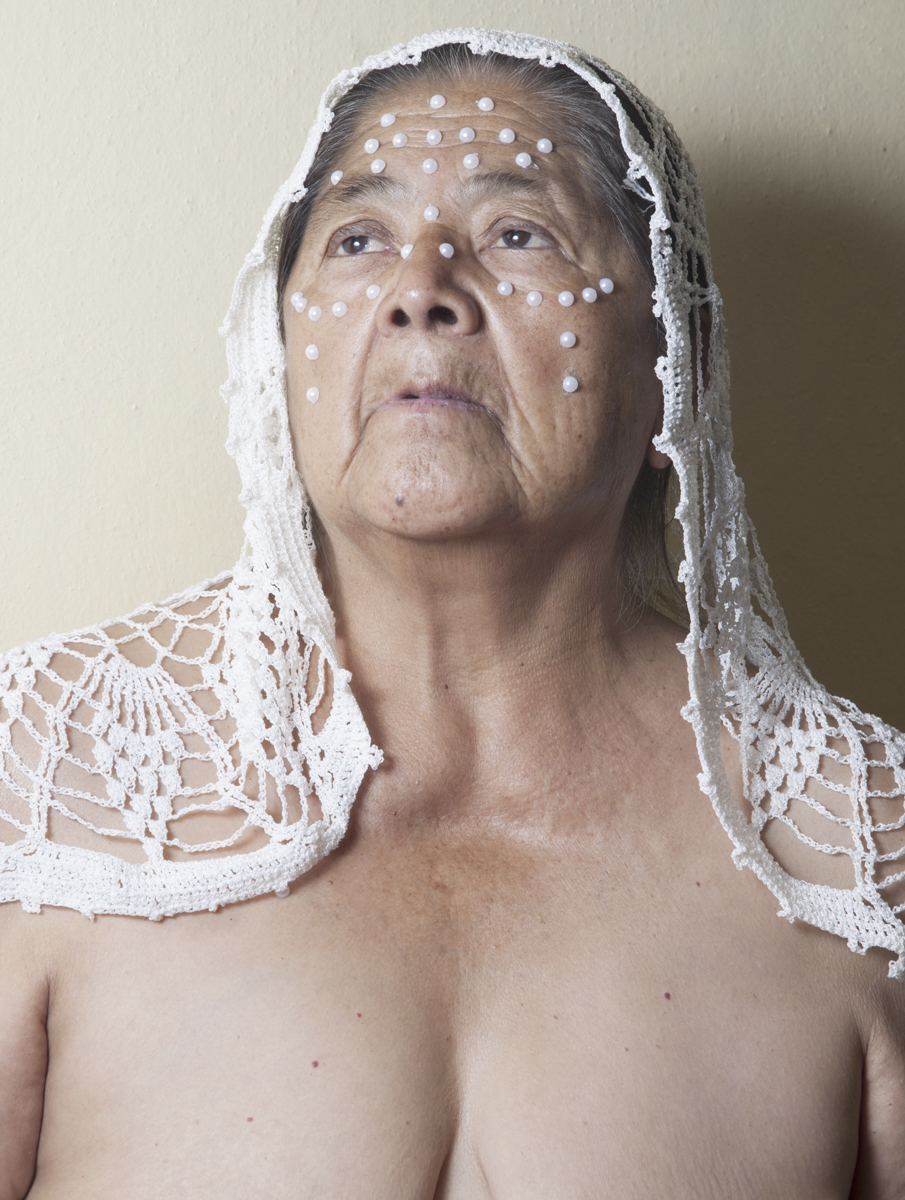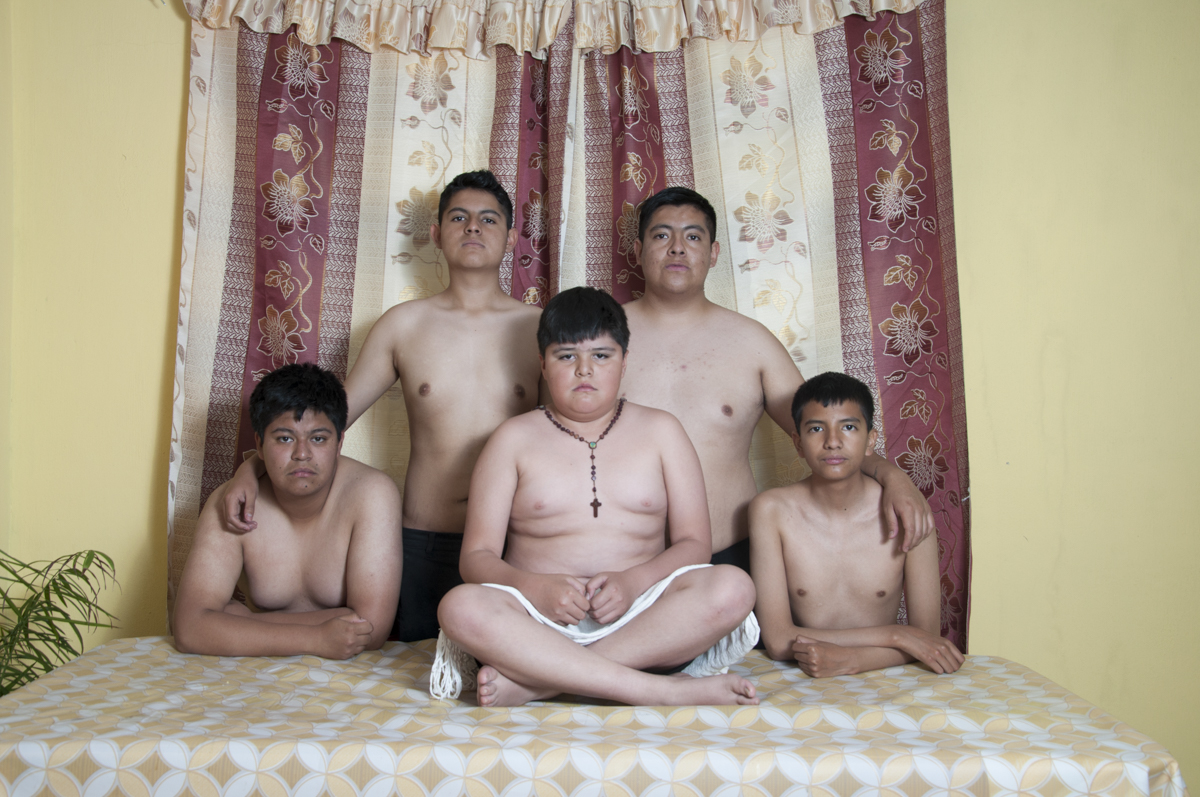When Diego Moreno was 5 years old, his parents sent him to live with his grandmother and they raised their other two children. As a child, Diego did not understand very well what was happening, despite the fact that many people spoke of abandonment. He grew up with his grandmother, knowing that his was not the story of some of his classmates whose parents had died. Little by little he was understanding that it was also a violent story.
When he was 14 years old, Diego bought his first cell phone with a camera and started taking pictures. The first of it was from his back, after being hit by his dad, and the prospect of him opened his head: he could see himself from other points of view. He made portraits of himself daily: he recorded his everyday life and his life with his grandmother. A year after buying his cell phone, he returned to live with his parents and siblings, and the camera was the mirror that allowed him to see the medusa: through the lens he managed to build ties with his family.
Diego does not come from a family of artists, in his the greatest aspiration was to be a school teacher, but he found photography and art out of necessity. He wanted to find himself and fill in the gaps that existed in his personal history. One of the things he always envied was the family and child photos that his schoolmates had. Photography was the tool to fill those gaps and tell his own story.
The writer María Zambrano in her book Notes of a method says that “It is not so alone who can tell his own story”. Photography has allowed Diego to understand his family past, to establish links with other people and to create new ways of imagining his origin and his family. Perhaps one of the most important things that he learned and that he constantly repeats is that: “By being attentive and having empathy I was able to get to know that there were neither good nor bad people in this history”.
For 8 years he photographed life with his grandmother, and then with his mother and his brothers. With the photos he built the family album that he never had and that was consolidated in the Huesped photobook. In the middle and influenced by his career in intercultural communication, he decided to work with the tradition of the paunchy Mercedarians in the project En mi mente nunca hay silencio. However, he took the big bellies out of the traditional parade and into the domestic and private spaces. He is currently developing Malign influences, a project that, through the appropriation of archives and the intervention on photographs, plays with the idea of origin, imagining other lineages and other relationships.


How did your relationship with photography and art begin?
Art came into my life as an act of necessity, of a deep need. In my family there is no history of artists, there are no musicians, there are no painters. I come from a family where everyone came from an aspirational range of being a preschool teacher, a high school teacher. In Mexico it is like what was aspired to have economic comfort, since educational places could be inherited. So I come from a family that, since I was little, what instructed me was to be a classroom teacher, and go to the mountains, go to some town to be a rural teacher. For me, photography really emerged as a very strong need to find myself and to seek many answers to all the emptiness that I felt during my childhood.
In short, my family and personal history is a bit complicated because I come from a very violent place. Since I was a child my parents abandoned me with my grandmother and they take care of my siblings. I was left in limbo, with many questions as a child and growing apart with many implications. I never knew clearly why my parents had abandoned me; but other people let me know very violently why. Growing up with this weight of abandonment cost me a lot.
Something that I remember a lot and that caused me a lot of envy, is that when I went to school they asked you to count your life, right? that you will tell your childhood, that you will show your photos when you were a baby. I was very frustrated not having this image of myself and being able to share it.
I think that my grandmother came up with this fantasy link to cope with my childhood. She told me that my parents had a lot of work, that I was her company and that we were going to grow up in this role as grandmother and grandson, but that my parents were present. It was a myth for me to have dads. It was not like the tragedies of classmates that their parents had died, my parents existed, you know? And being able to configure this image of them was very difficult for me and therefore build an image of myself as well.
At fourteen, photography comes to me and connects with me as a way to translate the deep loneliness I had, because apart from all this family violence, I also suffered too much violence at school. It was a clash of forces all the time: dealing with understanding why my presence was so uncomfortable towards others. So, since I was a child, I also felt an empathy with the monstrous, with the alien, with all this that is afraid of and, and little by little, they also convinced me to be like the creepy of the family, as someone who had no connection with his family, but was an absent being.
I started taking self-portraits when I was 14, with the first cell phone I bought. The first photo I took was once my back hurt a lot, my dad had hit me. That was the first time I photographed myself and for me that act of seeing myself from another angle, even though it was painful, was important. I think that’s when I started to generate this image of myself, to embrace it and understand it.


Partly because of your age, you started with digital photography, that implies other things.
This artifact that I found doing digital photography with my cell phone is very interesting, which is also another era. It is very interesting to see how for many analog photography and digital photography make them link with something in a particular way. The immediacy, for example.
In many places in Latin America, art is for rich people. I mean, it sums up like this, right? For me to think of being an artist was unimaginable. But photography, the same democratization of photography, came to us from the hand of the cell phone, with a click. You can take your photo, see yourself and have proof of what your body is and what you are living. In addition, there was a deep hole, because I did not have photos of my childhood, of the matrix of the human being that is the family album.
When I was 14 years old, I started taking pictures with my grandmother, as an act of affection, something natural between us. Without thinking that I was going to study photography, that I was going to dedicate myself to this. It was having the camera and playing with it, nothing more, as a private space between the two of us.
I had been photographing myself daily with her for three years, when I realized that the same photographic medium served to create this interaction with others. I really had a hard time interacting with people and through photography I understood that I could discover an image of myself, and I could also discover who others are.
Also, at 15 my parents recognize me as their son and take me to live with them. When I go to live at his house, I realize the common denominator and the family modus operandi, since there is a lot of violence, both physical and psychological. So I enter that whirlpool at 15 years old, and I start using photography with my mother and my two brothers. Dad left the house.
Through photography I begin to interact with them and to photograph all this violent chaos that arises in my parents’ house. I lived with them four years and I photograph non-stop. Photography has gradually become a means to create ties.



You said that the camera was the mirror that allowed you to see the face of the medusa, what does that mean?
For me it was very interesting and disturbing to approach, for example, my parents, my mother. And the camera was the only means to evade this very confrontational image and capture it. When I read the story of the medusa, this thing of seduction with men and that it turned them into stone, I felt that for me the camera was like all this mirror thing when you put it in the sun, it reflects the other and is like a boomerang , it is a constant coming and going. I think that works in photography because to the extent that photographing myself affected me, transferring this same thought when photographing the other and having empathy with the other, was when I understood the root of everything: that I was not just the the only one who suffered in all this, but it was more of a cycle, right?
And that lasted eight years. Because by understanding all that, I knew that they too were going through a pain. So all the people I photographed, who were actually my family, although I saw them as strangers, they also came from a very complicated story that made everything become common. By being attentive and having empathy, I was able to know that there were neither good nor bad people in history.
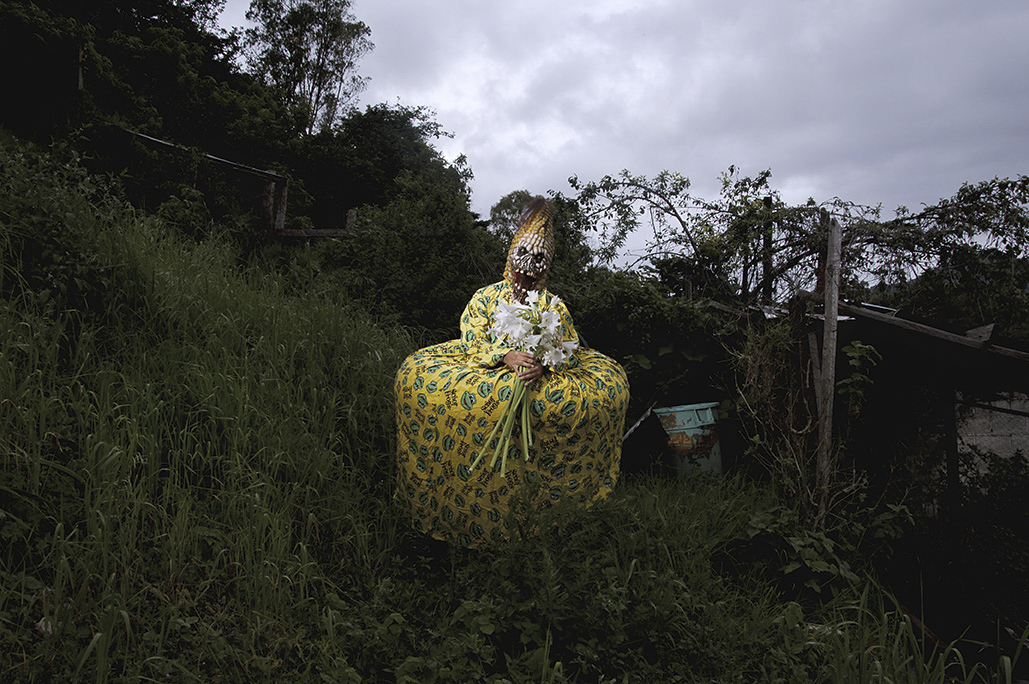
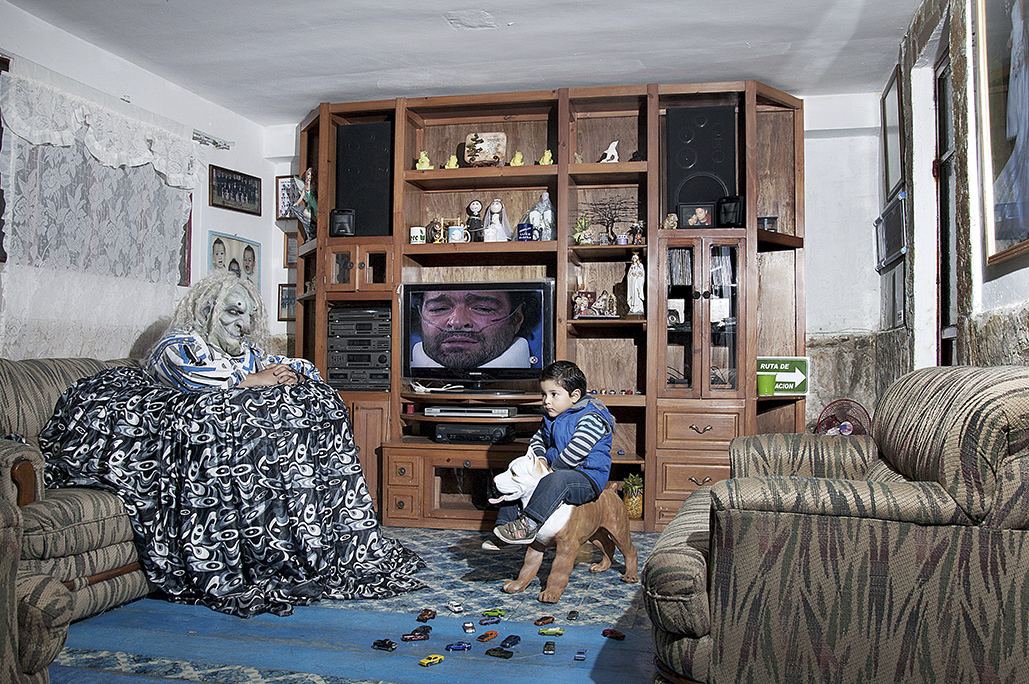
Did you study photography in a formal, scholastic way?
Yes, I started at 16 years old. I made such a strong bond with photography that I said “I want to dedicate myself to this. I want to photograph, but I don’t want to be a wedding photographer ”. But neither did I find what it was like, I knew that the photo was the most important thing to me. Then one day walking through the park here in Chiapas, I came across an ad that said Chiapas Art Gym, and it offered basic photography courses.
For me it was like enlightenment. I went to ask and they told me that the first course was going to be the basic photography course. That it was a school with main headquarters in Mexico City and that it was from the photographer José Luis Cuevas. At that time I didn’t know anything, nothing. José Luis Cuevas is one of the most important contemporary photographers in Mexico.
I said orale, everything sounds very nice. And he tells me this is not a school, rather it is a center where you can train, that is why it is called an art gym, right? because you are going to exercise this way of linking with what you want. But our main medium is photography. Our first workshop is self-portrait and our second workshop is production and costumes.
I fell right, my first teachers were the right ones, right? I remember that the first class I took was to find a name for what I had been doing for several years. Finding a name was also hopeful, knowing that everything I produced, everything I had on my SD because I didn’t even have a computer, was going somewhere, that it could fit somewhere. And that was another way of not feeling so alone.
But then it was another issue, because also when I told my family I want to pay for photo workshops, they told me you are crazy, that is not going to lead you anywhere. So what I did was get to work in a stationery store to pay for the photo workshops and they also gave me a lot of scholarships. It was a bet and I do not regret it, I am very happy to have taken it.

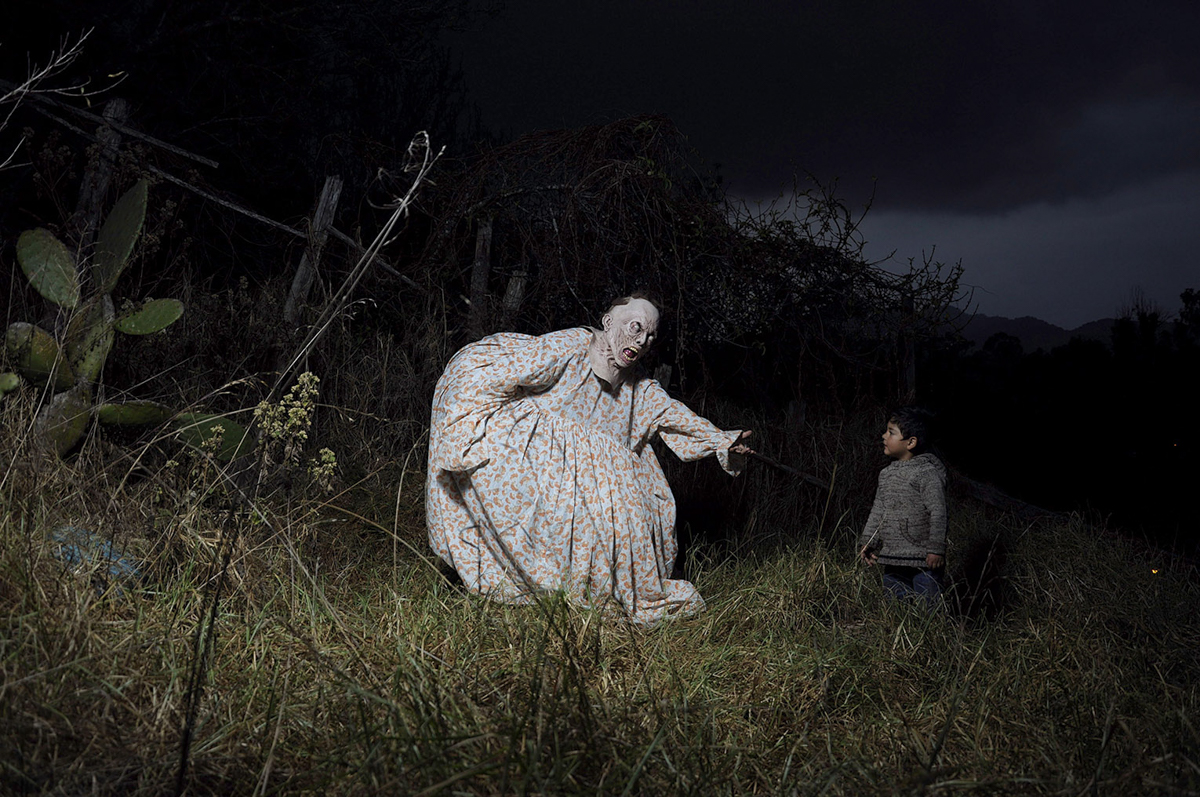
And there you decided to start working on family issues, on yourself.
Aha. It was so much that it caught me and I feel like my character is like this: when I obsess over something it’s like giving it my all and focusing. Everything is in focus. My energy, my money, everything is focused on this. I feel that Huésped did catch me too much and I had no willingness or desire to focus on something else, because it was also a complicated process that did not allow me to connect.
Besides, I was studying intercultural communication here in San Cristóbal. That helped me a lot in my photographic process, because to the extent that I dedicated eight years to Huésped, in the middle, I started a project with a tradition here, which is that of the Panzudos mercedarios. And with that theme I made the project En mi mente nunca hay silencio. That made me turn around and leave the drama and the personal issues that I had been working on. In other words, all my work is personal and I am not sorry to say it at all, I have assumed it very well and I have taken this position. But in college I studied community bond and it was something that also made me noise since I was a child. I come from a place and from a family that has been part, in fact, of antecedents like Zapatismo, and of all the great chaos that Chiapas has caused, which has also been an epicenter of many historical events for the world.
And I kept thinking about how I could make something concrete when photographing others, but to the extent that they tell me their story as if they are co-authors. When I started to devise this new project, this one was already aware. I said yes, I want it to be a photo project that has personal layers, but it is essential to review something that has caused me a lot of noise since I was a child, which is folklore.
There I understood that my work could be that, a document and also a fiction all the time. And with that I felt very comfortable. It is what allowed me to know that I can create projects that do not have to do with such a familiar base, as was my first project. I mean, now I think that all my projects speak of me, of my own interest, of knowing myself and knowing others and that they have allowed me to do so. I could not say in my work this is documentary and this is not, because I feel that this hybrid is the one with which I have felt most comfortable and I love when barriers are broken and when something is no longer what it had to be.
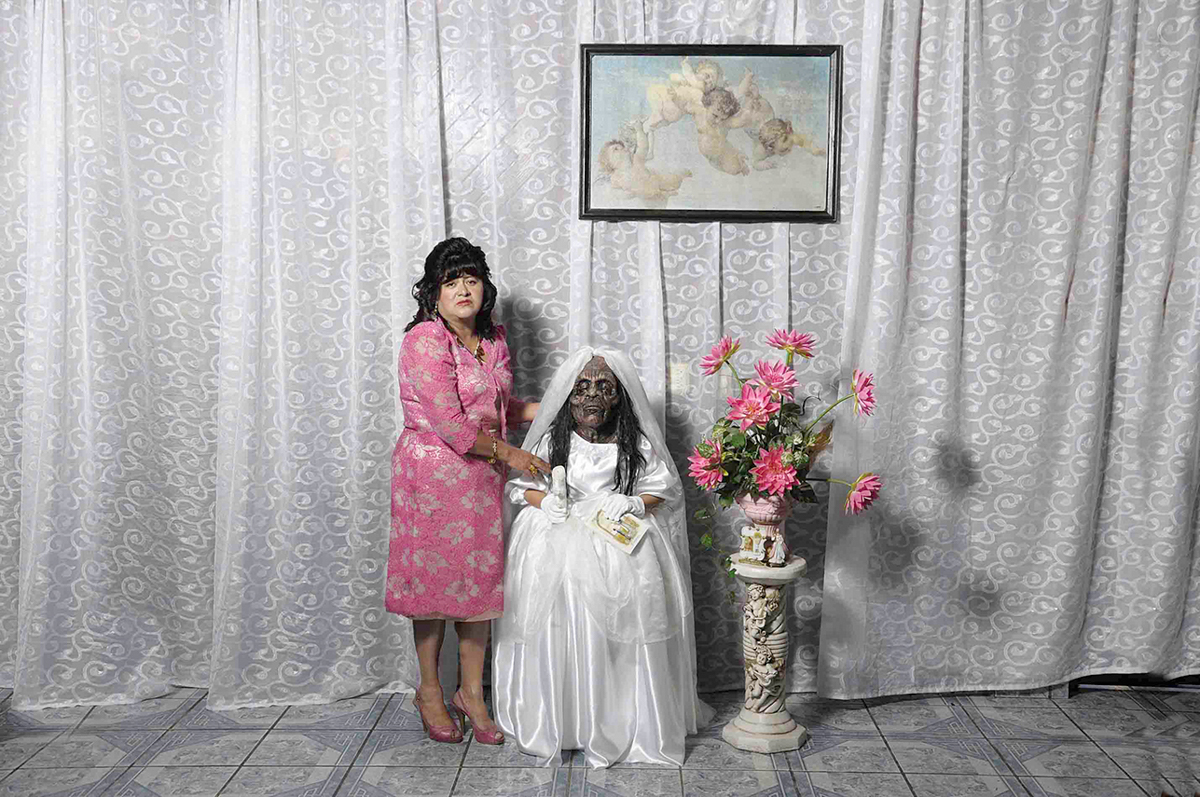
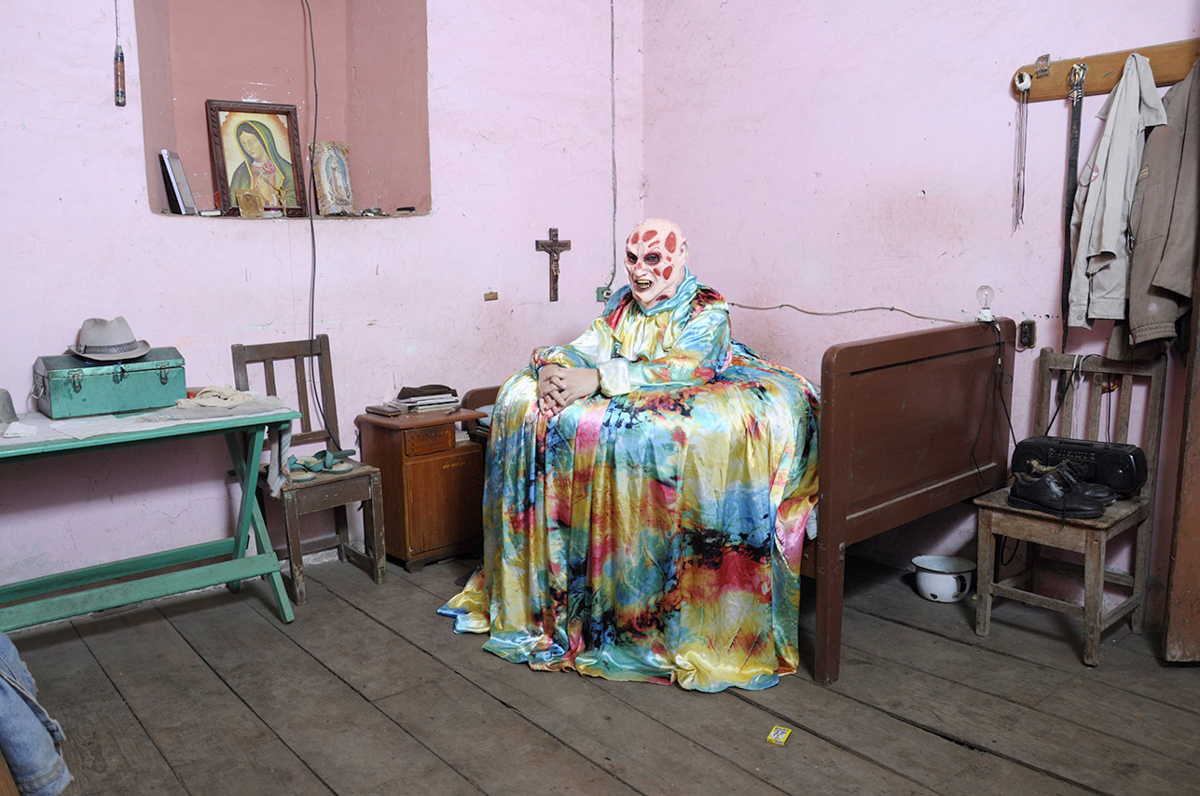
You say that Huésped was partly filling gaps, creating bonds, understanding these forms of family violence, understanding that there are no good or bad. What is Malign influences?
It’s my funniest, most rebellious project and it took a lot of strength in quarantine. It took infinite power in quarantine. Since 2017 I have been intervening photos, I have a project that is still in process, it is called Spectrum and it is a hybrid because it consists of literature, video, file appropriation and photo.
Spectrum arises as a way to investigate the lineage of women healers of my family, my grandmother and my aunts come from a secret lineage because they are also Catholic. They heal with plants but with an esoteric energy of predictions and nahuals. I had been working at Huésped for eight years, which was a great advance to understand many things and I said well, I want to do something more transgressive and I really want to erase the men in my family. In this Spectrum project, since I’m really focusing a lot on honoring the women in my family to all the men I see in the family photos, I’m going to make them plants. In this act again of wanting to reconfigure my history.
That was my first base. But it was very vague because I was afraid to intervene in the photos. Actually, even if they are not the original photos, putting my hand into the story disturbs me a lot because I don’t want to hurt people, there are those who are affected if you remove them from the photos.
In 2019 I started to set up my studio and rediscovered all the family album photos I stole from my mother and her house where my brothers used to go out. I had them stored there and again I said I already have a scanner, I’m going to scan them and I have to do something for them. Then one day I was so bored and I said oh I’m going to paint horns on them. It was like a trigger and the images began to emerge. I started to rediscover my own personal archive, because I’m also a big fan of buying photos at the flea markets. Before the pandemic, I would go to the flea market a lot and find photos like that of super bizarre people and I would say how incredible it would be to have them in my house. I like them. And I was collecting them. I started by cutting and pasting the photos and I said well, it would look great if I put it in and paint horns on it and I start to take out as little things that have to do with it.
In January 2020 I started painting daily. And in the confinement, in order not to go out, it was my only refuge to be painting all the time and being like that, rereading the Bible, remembering the years I served the church. That is a kind of revenge against the religious system. I feel that it is a system of silent violence, which has hit us in many ways in my family. There arose Malign influences.
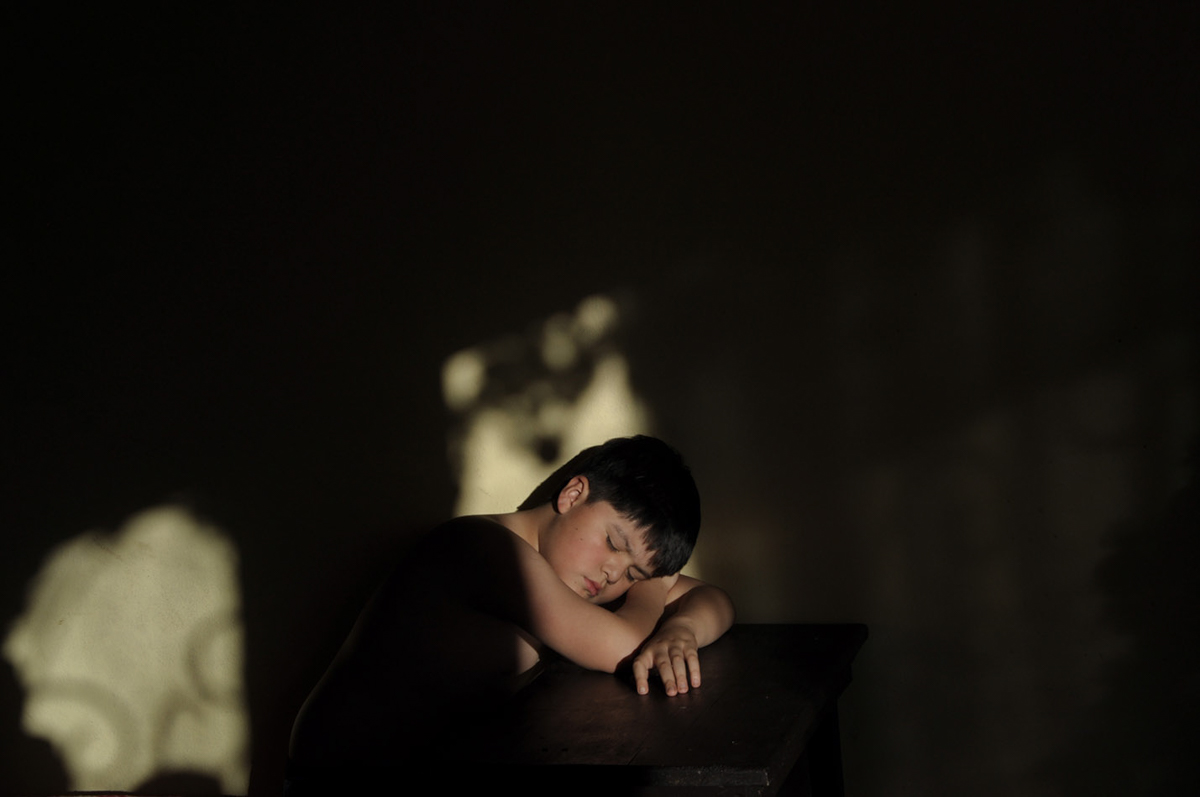
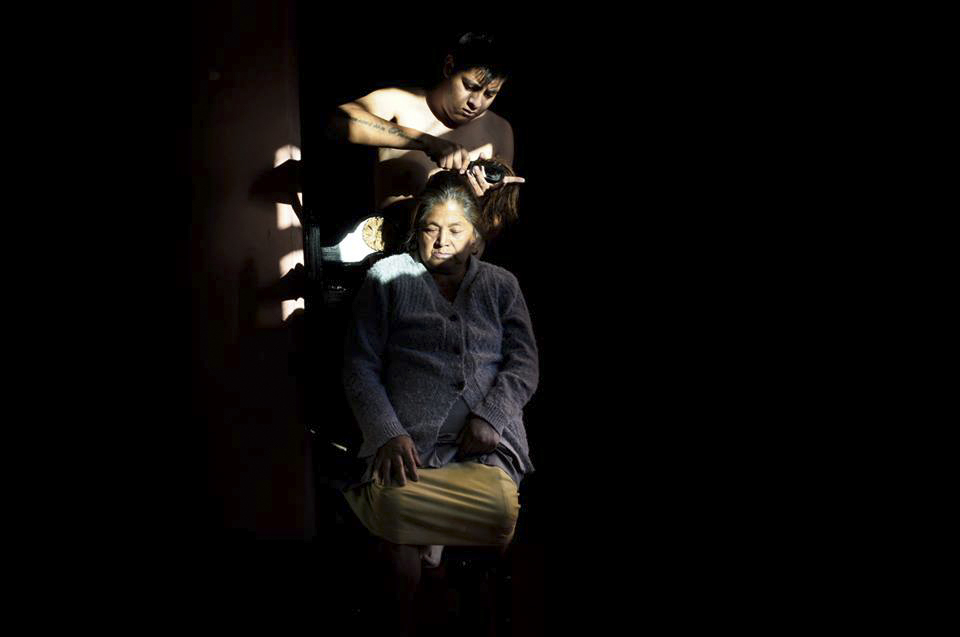
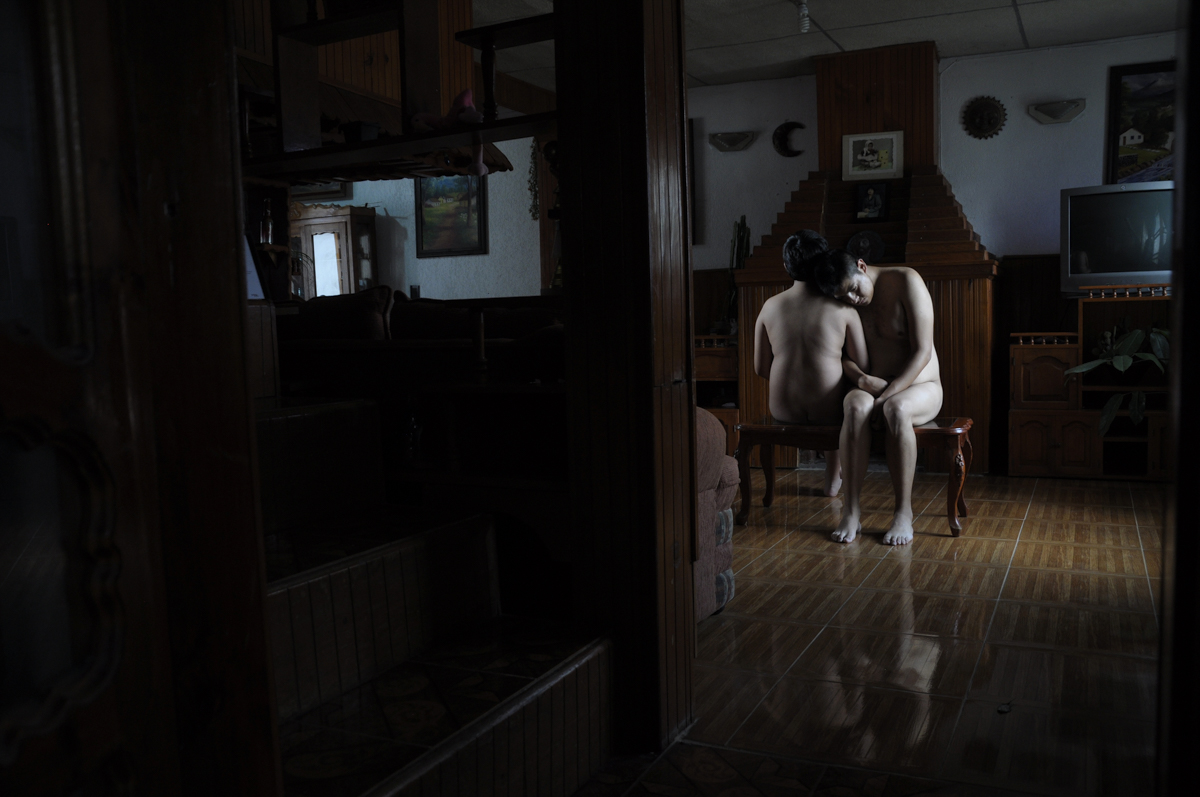
Isn’t this intervention of the family file a way to have another family? A monstrous one?
Yes. For me, creating monsters was like creating my great-aunt, who was also erased from the family for being deformed. And create these beings that in an alternate reality would be my family. I would be very happy because they are what they are. They are something that does not hide anything from you, they are there, they are ugly and they smell bad. But that is what it is and is a way of creating another reality, creating another family, deciding with whom and with whom not.
It is a way of reflecting on the family structure. You understand it very well, because there is a lot of that in my work, all the time. That is also why the link with fiction, and with knowing that one can create this to live another reality. Not traveling and staying in fantasy, but knowing that there are alternate possibilities to cope with everything.
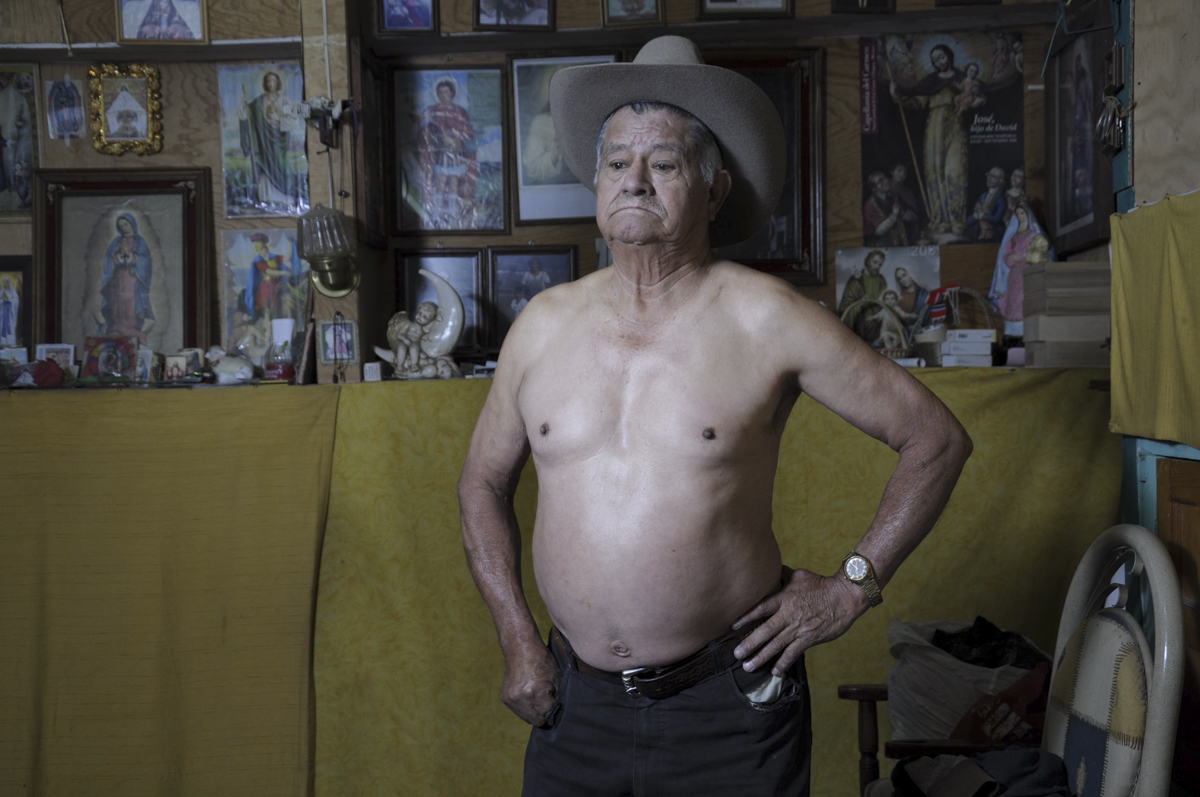
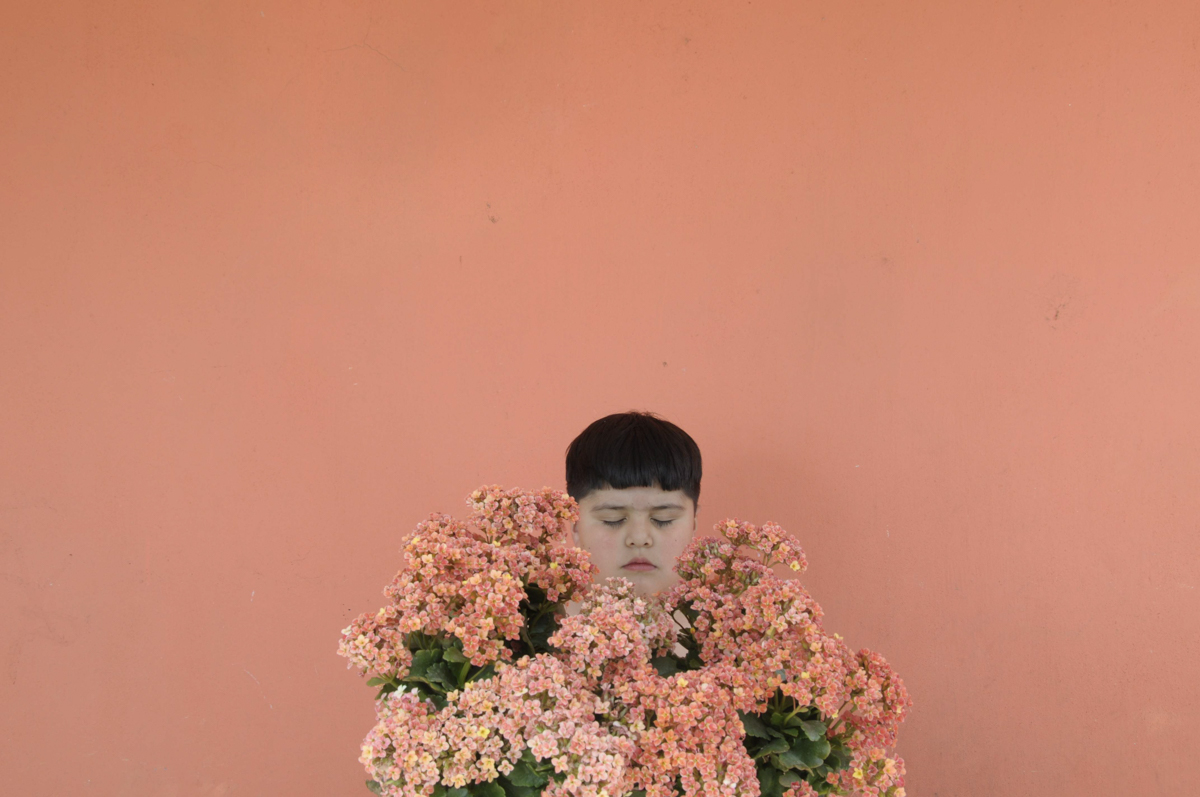
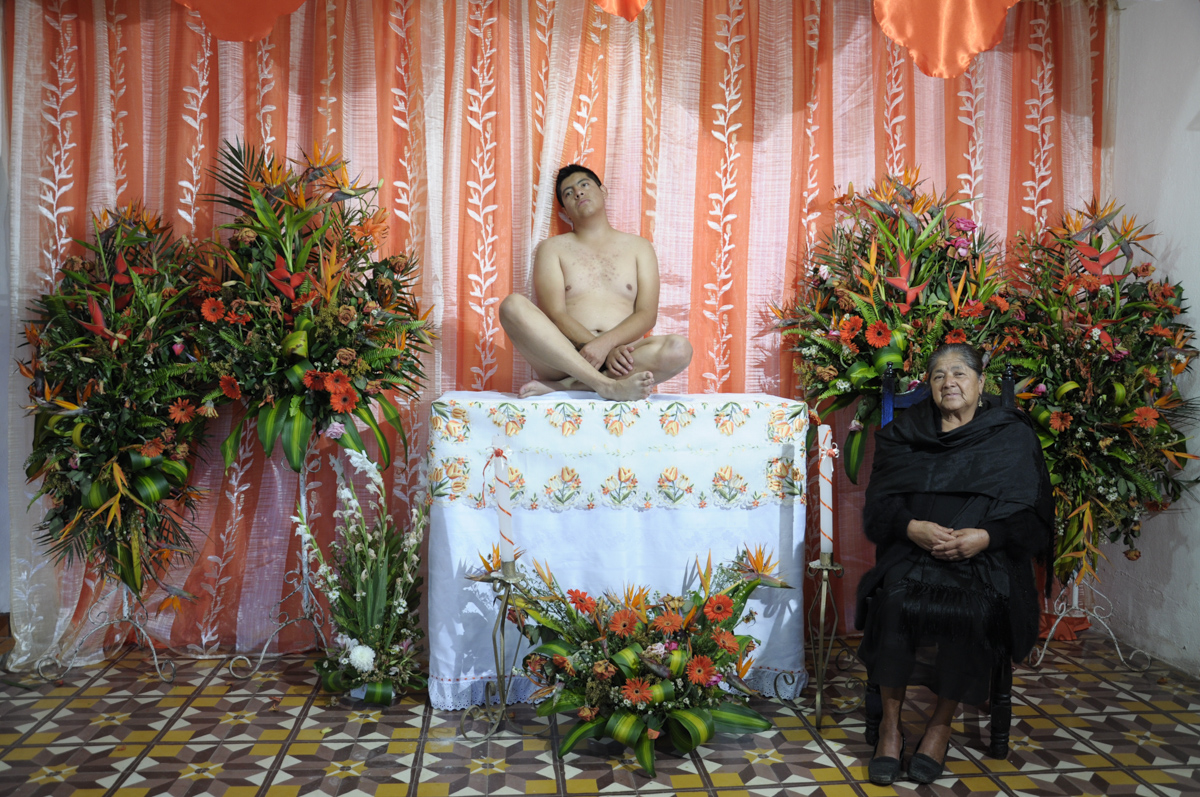
What are your references?
I think the main one is my grandmother’s oral tradition. I have been researching books on legends and many of the ones she tells me are missing. So I try to translate them into images.
Something that from a very young age triggered images is music. For example, I am a super fan of a group that no longer exists, of melodic rock. They were called Austin TV, they also captivated me because you never knew their faces, they always appeared with masks of something. So, I really think that my first reference was music and then the whole school of Gothic literature.
Also the first movies I saw were horror movies. Since I was a child I have been captivated. It caused a lot of conflict to my grandmother that I saw Chucky, for example. I’m a super fan of that, of the clown. He fascinated me because he was a product of the imagination, that’s why he took the form of a spider or a clown, whatever you were most afraid of. In addition, I am a very fan of Guillermo del Toro, I saw his films in my teens.
In the photographic references is Maya Goded, she is my friend and she was also my teacher. She captivated me since I discovered her. Our times are super abysmal and it is very interesting how the same themes captivate us. Another is Roger Ballen. The two are my main references in the photo, I have had the opportunity to talk with both and it has been a very nice exchange.
